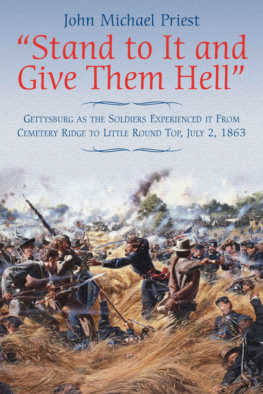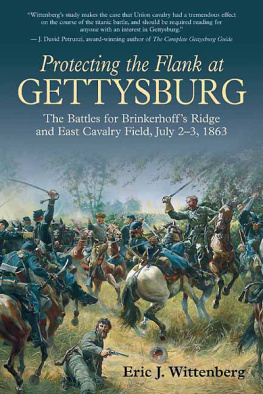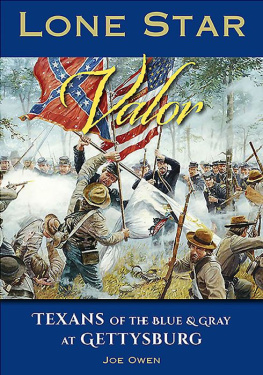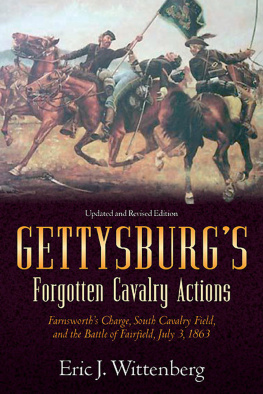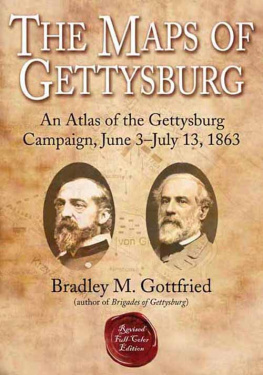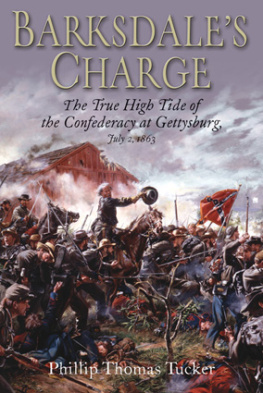Lee is Trapped and Must be Taken
Eleven Fateful Days after Gettysburg, July 4-14, 1863
Thomas J. Ryan
Richard R. Schaus
Savas Beatie
California
Copyright 2019 by Thomas J. Ryan and Richard R. Schaus
All rights reserved. No part of this publication may be reproduced, stored in a retrieval system, or transmitted, in any form or by any means, electronic, mechanical, photocopying, recording, or otherwise, without the prior written permission of the publisher.
Library of Congress Cataloging-in-Publication Data
Names: Ryan, Thomas J., 1934-author. | Schaus, Richard R., author
Title: Lee is Trapped and Must be Taken: Eleven Fateful Days after
Gettysburg: July 4 to July 14, 1863 / by Thomas J. Ryan and Richard R. Schaus.
Description: First edition. | El Dorado Hills, California : Savas Beatie, [2019] |
Includes bibliographical references and index.
Identifiers: LCCN 2019010265| ISBN 9781611214598 (hardcover: alk. paper) |
ISBN 9781611214604 (ebk.)
Subjects: LCSH: Gettysburg Campaign, 1863. | Meade, George Gordon, 1815-1872. |
PennsylvaniaHistoryCivil War, 1861-1865. | MarylandHistoryCivil War,
1861-1865. | United StatesHistoryCivil War, 1861-1865. |
Cumberland Valley (Md. and Pa.)HistoryCivil War, 1861-1865.
Classification: LCC E475.51 .R925 2019 | DDC 973.7/349dc23
LC record available at https://lccn.loc.gov/2019010265
First Edition, First Printing
Savas Beatie
989 Governor Drive, Suite 102
El Dorado Hills, CA 95762
Phone: 916-941-6896
(web) www.savasbeatie.com
(E-mail)
Our titles are available at special discounts for bulk purchases. For more details, contact us at .
To Toms children, Ginny, Mike, Steve, Matt and their loved ones
To the memory of Ricks mother and father
Also to the men and women, both military and civilian, who served in the U.S. Intelligence
Community from the time of the Civil War until the present day.
Table of Contents
List of Maps
1. Theater Map
2. Army of the Potomac Signal Corps Stations
3. Gettysburg Retreat: July 4, 1863
4. Gettysburg Retreat: July 5, 1863
5. Gettysburg Retreat: July 6, 1863
6. Gettysburg Retreat: July 7, 1863
7. Gettysburg Retreat: July 8, 1863
8. Gettysburg Retreat: July 9, 1863
9. Gettysburg Retreat: July 10, 1863
10. Gettysburg Retreat: July 11, 1863
11. Gettysburg Retreat: July 12, 1863
12. Gettysburg Retreat: July 13, 1863
13. General Meades Reconnaissance-in-Force, July 14, 1863
14. Gettysburg Retreat: July 14, 1863
Photos and illustrations have been interspersed throughout the book for the convenience of the reader.
Prologue
after reviewing Thomas J. Ryans masterful five-part series titled A Battle of Wits: Intelligence After Operations during the Gettysburg Campaign, published in Gettysburg Magazine from 2003 to 2005, I concluded this was the best explanation I have read about the role of intelligence in the confrontation between Gen. Robert E. Lees Army of Northern Virginia and Maj. Gen. Joseph Hookers Army of the Potomac, later under the command of Maj. Gen. George G. Meade, during the lengthy Gettysburg campaign in 1863. I found each part of this series progressively more informative than the previous one.
Ryans background as a senior intelligence officer for the Department of Defense provided the knowledge and experience necessary to interpret the role of Col. George H. Sharpe as chief of the Army of the Potomacs Bureau of Military Information (BMI). Ryans work was a continuation of the pioneering study published by Edwin C. Fishel in 1996 titled The Secret War for the Union: The Untold Story of Military Intelligence in the Civil War .
The information that the BMI provided to Meade during the battle, mainly derived from interrogation of prisoners of war, provided Meade with a better understanding of the strength and condition of Lees army than General Lee knew himself. In concluding the five-part series, Ryan stressed that, timely and accurate intelligence cannot affect the outcome of a battle unless it is coupled with resolute leadership.
These Gettysburg Magazine articles formed the basis for Ryans award-winning book Spies, Scouts, and Secrets in the Gettysburg Campaign: How the Critical Role of Intelligence Impacted the Outcome of Lees Invasion of the North, June-July 1863 , published by Savas Beatie in 2015.
Perceiving a need to expand on the analysis of the period subsequent to the three-day battle during which Lees Army of Northern Virginia retreated from Gettysburg, Ryan joined with co-author Richard R. Schaus to research and write about the decisions Lee and Meade made during Lees desperate attempt to reach safety across the Potomac River after the defeat of his army at Gettysburg.
On the fateful day of September 11, 2001, I was walking through a shopping mall near my home not far from the US Department of Defense Headquarters at the Pentagon in Arlington, Virginia. Suddenly, I heard the roar of an airplane flying overhead followed by a tremendous explosion as the plane flew directly into the Pentagon. It has since occurred to me, had our intelligence agencies been as alert prior to 9/11 as the BMI was in gathering and reporting vital information about the enemys intentions during the Gettysburg campaign, and had US authorities acted on that intelligence, that disaster may have been avoided.
Keep this tragedy in mind as you read Lee is Trapped and Must be Taken: Eleven Fateful Days after Gettysburg: July 4 to July 14, 1863 , a groundbreaking study that dissects those fateful days and the importance of the competing armies to both collect information about the enemys location, strength, and intentions, and act upon that intelligence in a timely manner.
Edwin C. Bearss
Chief Historian Emeritus, National Park Service
Foreword
This is a deep study about decisions made by army commanders Maj. Gen. George G. Meade of the Army This of the Potomac and Gen. Robert E. Lee of the Army of Northern Virginia during the aftermath of the Battle of Gettysburg in July 1863. General Meade had won a great victory over Lee at Gettysburg (July 1-3, 1863), and now the Confederate commander faced the exceedingly difficult job of withdrawing his battered army from the battlefield and southward across the Potomac River with as little additional loss as possible. Meade had to decide what his next steps would be in wake of his victory.
The retreat was unique in many ways. The trek to the Potomac was more than 40 miles. Every day from July 4 to July 14 witnessed small unit actions and battles, including the fight at Monterey Pass in South Mountain on July 4 and 5. There, Maj. Gen. Hugh Judson Kilpatricks Union cavalry attacked the advance of the Army of Northern Virginia. Kilpatrick suffered more than 40 casualties and the Confederates lost in excess of 1,500, most of them taken prisoner. The clash sparked a chain of actions north of the Potomac over several days.


